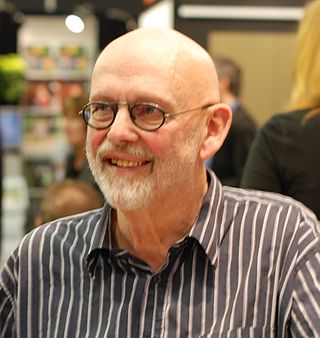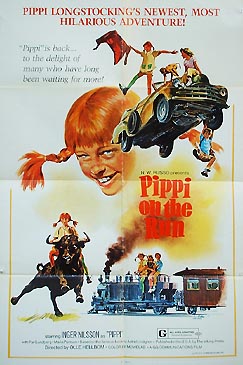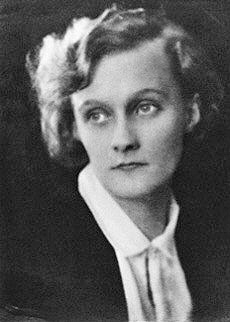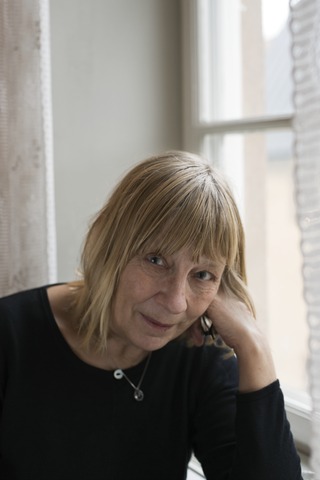
Astrid Anna Emilia Lindgren was a Swedish writer of fiction and screenplays. She is best known for several children's book series, featuring Pippi Longstocking, Emil of Lönneberga, Karlsson-on-the-Roof, and the Six Bullerby Children, and for the children's fantasy novels Mio, My Son; Ronia the Robber's Daughter; and The Brothers Lionheart. Lindgren worked on the Children's Literature Editorial Board at the Rabén & Sjögren publishing house in Stockholm and wrote more than 30 books for children. In 2017, she was calculated to be the world's 18th most translated author. Lindgren had by 2010 sold roughly 167 million books worldwide. In 1994, she was awarded the Right Livelihood Award for "her unique authorship dedicated to the rights of children and respect for their individuality". Her opposition to corporal punishment of children resulted in the world's first law on the matter in 1979, while her campaigning for animal welfare led to a new law, Lex Lindgren, in time for her 80th birthday.

Jan Lööf is a Swedish illustrator, author, comic creator, and jazz musician.

Barbro Lindgren is a Swedish writer of children's books and books for adult readers. For her lasting contribution as a children's writer, Lindgren was a finalist for the biennial, international Hans Christian Andersen Award in 2004. Ten years later, she won the annual Astrid Lindgren Memorial Award. The biggest cash prize in children's and young-adult literature, it rewards a writer, illustrator, oral storyteller, or reading promoter for its entire body of work.
The Nils Holgersson Plaque is an award given by Swedish Library Association. It was established in 1950, and named for the book The Wonderful Adventures of Nils by Selma Lagerlöf. It is an annual award given to the author of the best children's or young people's book in the Swedish language.
Samfundet De Nio is a Swedish literary society founded on 14 February 1913 in Stockholm by a testamentary donation from writer Lotten von Kraemer. The society has nine members who are elected for life. Its purpose is to promote Swedish literature, peace and women's issues. It mainly presents a number of literary awards. It was started as an alternative to the Swedish Academy and is often compared to its more noted cousin.

Pippi on the Run is a 1970 Swedish/West German movie, sequel of Pippi in the South Seas with the cast of the 1969 TV series Pippi Longstocking. It is the last entry in the original TV and movie series and the only one to not be based on any of the previous books written by Astrid Lindgren. Lindgren eventually wrote a book adaptation of the movie. It was released in the US in 1977.
The titles hovsångare for men and hovsångerska for women are awarded by the Swedish monarch to a singer who, by their vocal art, has contributed to the international standing of Swedish singing. The formal title was introduced by King Gustav III of Sweden in 1773, with the first recipients being Elisabeth Olin and Carl Stenborg. The position as such, however, dates back to the 17th century, when Anne Chabanceau de La Barre and Joseph Chabanceau de La Barre were singers at the court of Queen Christina of Sweden.

"Lille katt" is a Swedish children's song. The lyrics were written by the author Astrid Lindgren. The music was composed by Georg Riedel.

Moni Helena Nilsson Brännström is a Swedish author, best known for the books about the boy Tsatsiki. Earlier she owned the 17th chair of the Swedish Academy for Children's Books. She is one of the initiators of the young-adult-culture-house Palatset in Stockholm.

Ulf Lennart Nilsson was a Swedish writer who published more than 100 books and picture books, geared mainly to children and adolescents. He was also the longtime president of the Swedish Academy for Children's Books. A number of his works have been translated into English by Gecko Press.

Eva Eriksson, born on 13 May 1949 in Halmstad, Sweden is a Swedish illustrator and writer. She has illustrated several children's books by writers including Barbro Lindgren and Viveca Lärn. Some of her illustrated books have also been translated into the English language by Gecko Press and other publishers.

Anna-Clara Beatrice Tidholm is a Swedish children's writer and illustrator. She grew up on Djurgården in Stockholm. Since 1970, she lives at a small farm in Arbrå.

Mats Berggren is a Swedish writer. He specializes in children's and young adult literature.

Anna Höglund is a Swedish writer and illustrator, considered to be one of Sweden's best illustrators.
Kati is a Swedish novel series by Astrid Lindgren. It tells the story of Kati, who travels, first to America, then to Italy and Paris. The novels were translated into many languages including English, German, Spanish, French and Russian.
The Red Bird is a children's book written by Astrid Lindgren.

Mårten Adolfsson Melin is a Swedish author of children's and youth books, who received the Astrid Lindgren Prize in 2022.
Kerstin Lundberg Hahn is a Swedish author of children's and youth books. She was awarded the Astrid Lindgren Prize in 2019.

Lena Marie Landström is a Swedish children's writer and illustrator. She was a joint recipient of the Astrid Lindgren Prize in 2009, with her husband and frequent collaborator Olof Landström.
Expressens Heffaklump (Heffaklumpen) is a Swedish annual award for children's and youth culture, especially children's and youth literature, that is awarded by the newspaper Expressen. The award was established in 1966 and the original award statuette was created by the artist Karl Göte Bejemark, but in the 2010s the artist Stina Opitz was given the assignment. The name "Heffaklump" is taken from the Swedish name of the Heffalump character in A.A. Milne's Winnie the Pooh stories.













